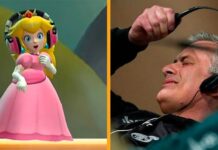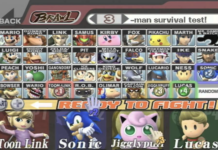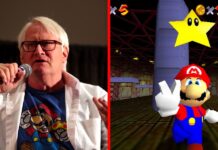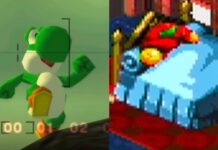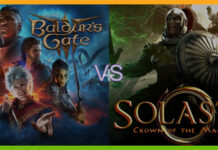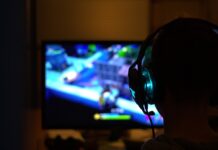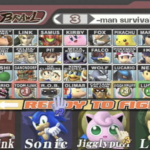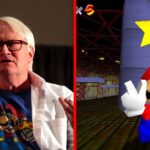Jesse Wilson, known as “JP3” in the esports community, is a graphic designer currently working as an art director for the Los Angeles Gladiators of the Overwatch League. He has previously worked for Counter Logic Gaming, as well as having done freelance work for streamers and organizations such as VGBootCamp, C9 Mang0, and Liquid’ Chillin.
I got the chance to sit down with JP3 and talk about the Overwatch League, and esports as an industry; both the good and the bad. Read on for some quality insight from an esports vet!
(This interview has been condensed and edited for clarity)

ggn00b: Tell Us About Yourself!
JP3: My name is Jesse Wilson and I work for the Los Angeles Gladiators, which is an Overwatch team in the “Overwatch League” (OWL), a league similar to the NHL, NBA, etc. It’s one of the only esports leagues with city-based teams, as well as the first esports league that deals with franchises, so the money that comes in is distributed among the teams. Because of this, the cost of entry into the league is very high, but once you’re in, you’re in.
ggn00b: Having city-based teams seems like a better way to connect with a larger, more mainstream audience than teams such as TSM or Team Liquid that don’t have a specific home-base.
JP3: I think what Overwatch does better than most esports is that it draws in a large, more diverse group of people. There’s a lot more women interested in Overwatch, as well as older and younger demographics. I feel like the way they’ve dealt with branding has helped create a more casual, appealing vibe rather than the standard demographic of hardcore young men that gaming communities are usually comprised of.
ggn00b: With the OWL being city-based, it’s inevitable that the league will draw comparisons to the major sports leagues like the aforementioned NHL, NBA, etc. What are some key differences and issues that you have to face in the esports industry?
JP3: The biggest thing is that in esports, you have no idea what the next big game could be; it’s impossible to tell what is going to take off. A great example of this is Fortnite, which might not be the most competitive game at the moment, but they’ve pumped a lot of money into it with million-dollar tournaments, and so it’s sort of created its own place in the esports world. There’s not one game that is just clearly at the top; games can rise and fall.
On top of that, games that do manage to stay relevant are often patched pretty frequently. Sports such as basketball, hockey, football, etc. don’t have to deal with mid-season patches that change the rules, and certainly don’t change the function of the game. Patches are a challenge unique to esports professionals, and it can be tricky to deal with both as a player and as someone who’s trying to create a market and brand for a game. I mean, who knows if a certain patch could drastically change the game and kill viewership?

ggn00b: It seems that one of the toughest barriers for esports games to really explode is being something that can be enjoyed by both casual and hardcore people. What do you think are the key focal points going forward for those looking to make esports grow?
JP3: It’s tough to say. I think the spectator side is really important, I think money in esports is really important, but at the heart of it, the game being competitively viable is key. I know Overwatch had complaints before the OWL launched that the game was difficult to watch/follow, and so the devs have made changes to make the game easier to spectate; one such change was adding “home” and “away” colors for the two teams, with the “away” team always being white. So if you see a white ability fly out, you know it’s the away team using it. This is just one way of improving the viewing experience.
ggn00b: You’ve been vocal about how young, aspiring graphic designers are doing work for esports teams for free, and how this hurts the design side of the industry, because teams will be looking for the free labor that is obviously out there, while the quality of design suffers because people aren’t willing to pay for the top-quality talent. Can you expand on that?
JP3: It’s a weird problem because esports is so new and young, and there are so many moving pieces at once. For me to get where I am right now, it was about putting myself in the right place to get these opportunities that don’t come around often. So if I had to look for another job, it’d be back to looking for those opportunities, and the market is extremely oversaturated with designers who will work for free just to say they did work for Cloud 9. And mid to high-level esports teams know this too; it’s not uncommon for teams to have four or five designers on hand that will get stuff done for free. Why throw money into a designer when you can get it done for free?
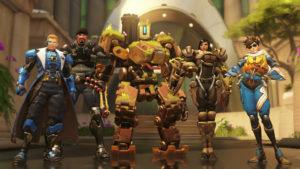
ggn00b: What would you recommend as a solution to this problem?
JP3: Well, on the side of the esports teams, it’s about valuing the designers more. So on the part of designers, we need to pick up our game; start charging more, never do anything for free. I always say to designers when they enter the space to charge double what you think you should. If everyone starts doing that, then it’s gonna make the whole situation better for everybody.
ggn00b: What is your favorite part about working in esports?
JP3: Definitely the people I work with, and the results of the OWL. Honestly, the Los Angeles Gladiators are so, so good to me, I don’t deserve it. They’ve been extremely helpful and accommodating, especially since I live on the east coast of Canada. A lot of esports opportunities come about based on location, so the fact that they are willing to make the long-distance relationship work is something I don’t take for granted.
It’s also just been great to see how the effect of the OWL; I was an hour outside of New York one time when two of the best Overwatch teams were playing, and while I was grabbing a bite to eat, I kept seeing people coming in and out with OWL apparel. One kid and his uncle came in wearing London Spitfire gear, and the kid saw my LA Gladiators hat, so we struck up a conversation. It was so great to see how excited both he and his uncle were about Overwatch, and I think it’s a sign of what great things esports has in store for us in the next 10 years.
ggn00b: It seems, on the surface, that it can be tough to break into esports if you’re not a competitor, streamer, or content creator of some sorts. What advice do you have for people with other talents looking to get into the industry?
JP3: It’s tough to say because esports is such an ever-changing landscape. The only advice I can give is what I know and what I did: make connections and have faith not only in yourself but in the community as a whole. You never know if someone you meet can rise up to a major position in this new industry, so make these connections and be sure to maintain them.
My only other piece of advice is that because the industry is so new, a lot of companies will not have everything fleshed out, so there will be spaces or holes where you can provide something that they might not even know that they need. For me, personally, as a graphic designer, I also pitched myself as a brand director, and that was a huge plus for the Gladiators. So basically, find out what these companies need, and provide yourself as the solution to their problem.
JP3 is a graphic designer and art director for the Los Angeles Gladiators. He can be found ranting about the team, as well as Super Smash Bros. over on Twitter at Jp3ilson.



